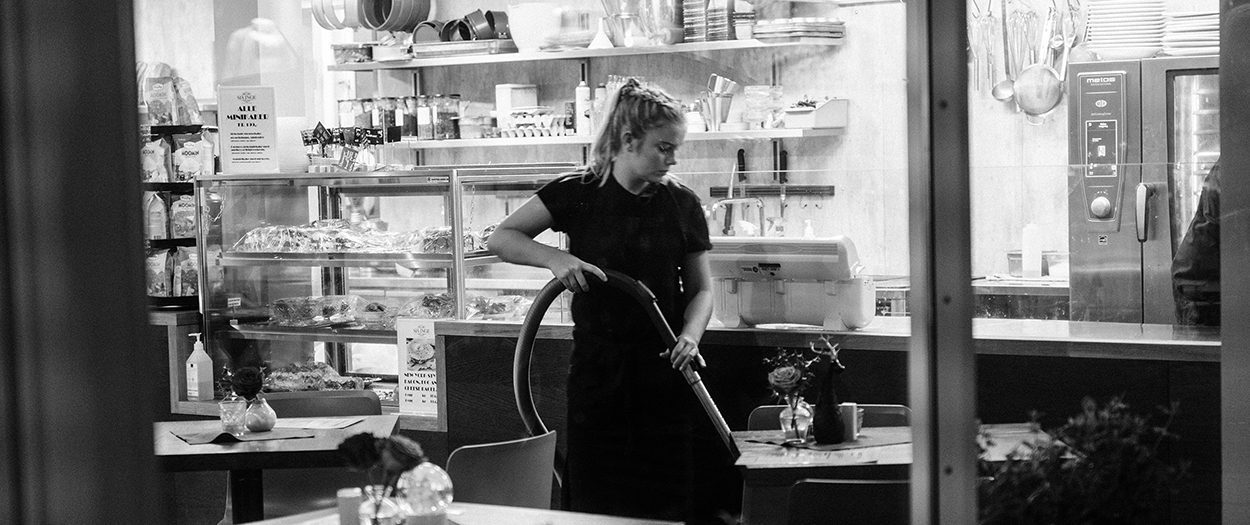How to avoid insolvency: stop these 5 things immediately
Uwe Ladwig
June 2020

At last, restaurateurs are allowed to reopen under strict conditions. There is a mood of optimism, a courageous “now more than ever” is in the air. Many restaurateurs are worried whether they will survive in the short and medium term. Many hygiene requirements, limited seating and uncertain guest acceptance has changed the situation. You should use the momentum of the restart to make your business crisis-proof, despite all your financial worries. But where do you start?
The first step towards securing your business starts with letting go. Even before the crisis, many restaurateurs were already in an existence-threatening blind flight, just before the crash: They flew “on sight” – hoping that at the end of the month there would be enough turnover to cover all costs and perhaps a small profit would be left. It would be like sitting in an airplane and the pilot does not know if the fuel in the tank will reach the destination airport. Would you steer this plane? Or at least sit in the back of the cabin? Many restaurateurs are on such a blind flight. They use antiquated methods from the 50s. How safe would you feel if the captain sat in a modern aircraft, but preferred an outdated paper map with a Mickey Mouse scout compass to the modern navigation instruments?
Conscious decisions based on a modern price calculation
We know that the corona crisis will have a lasting effect on the gastronomy. Yet, we do not know how guests will accept the new situation. But one thing is obvious: You will have to act and react more flexibly to get your business safely through the crisis. And to do so, you will need transparency. At all times. If you always know exactly the financial situation you are in, then you will sail more relaxed through an annoying audit. You have your fate and the success of your business in your own hands. To do so, you first need to open it and let go of some things.
The outdated paper map and the compass from our example stand for the antiquated mark-up calculation. There is adequate data basis missing for decisions such as pricing, purchasing, employee allocation and opening hours. Now the time has come: Finally let go of the old paper map and compass and switch over.
“But we’ve always done it this way” was yesterday
Pricing is always the first measure to tackle. This is the linchpin of your success and your financial existence. And that is why the priority of our top 5 measures is to let go of the still predominant mark-up calculation. It does not get better just because it has always been done that way. On the contrary: Each day you get by without mark-up calculation, you avoid a sleepless night full of worries.
In the following articles in my series, we will approach each topic in more detail with some practical examples. Below, I summarise all the things you should stop now:
Stop it now:
1. Mark-up calculation like in the 50s: It’s amazing how long this method has lasted. Whereas the cost of goods used to be the highest cost, now it is the personnel costs. Those who still calculate in the same way as before, hardly cover the costs for personnel, rent and energy. Switching to the contribution margin calculation not only brings more turnover and profit but also provides you with more financial transparency and avoids embarrassing tax audit questions.
2. Menu changes by gut feeling: If you don’t know which dishes are “racers”, “winners” or “losers”, then your pricing is ineffective. In combination with the contribution margin calculation, you use menu card diagnoses, data, and statistics to optimise the menu and prices of dishes.
3. Ad hoc roster planning: Without knowledge of the most important key figures such as contribution margin 2 and sales forecasts for selected opening windows, your rosters will only be bets on the future.
4. Single focus on the cost of goods: If you only think about the cost of goods or the cost of goods in percent, you probably also think you will achieve a higher contribution margin with drinks than with food. If you know exactly your contribution margin, you will no longer focus so rigidly on the cost of goods alone.
5. Usage of outdated and rigid software systems: A price calculation based on the contribution margin calculation can be done in Excel. But there are also modern software solutions like DISH Menukit on the market. Not only the guests expect new technical possibilities of communication, investments in better digital cash register systems, reservation and ordering tools and their data evaluation capabilities give you more room for decision for a flexible pricing and an even better service.
In the next article we will focus on the contribution margin calculation, without which a reasonable pricing does not work. What is this all about and what do you have to pay attention to when switching to it? With a switch to the new method, you are taking the most important step towards securing your business.
Uwe Ladwig is the owner of F & B Support in Willich. He supports restaurateurs with business management challenges, offers consulting, coaching, webinars, online courses, seminars and calculation packages. There is a free online course for switching to contribution margin calculation. For more information, please visit www.f-bsupport.de.









